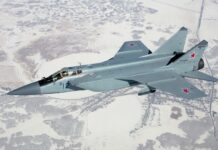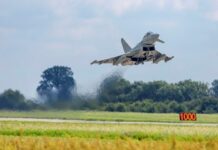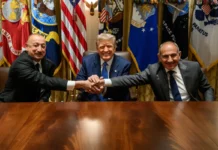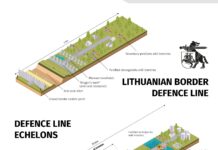
Russian drone incursion over Poland draws active response
Peter Felstead
The incursion into Polish airspace on 10 September 2025 by well over a dozen Russian drones during an air attack on Ukraine, which led Polish and NATO air assets into the unprecedented action of shooting them down, has significantly ramped up tension in the region.
The downing of the drones – in an operation that involved Polish F-16 and Dutch F-35 fighters as well as NATO aerial refuelling aircraft and what was described as “Italian AWACS” by NATO Secretary General Mark Rutte [although Italy does not independently operate E-3 Airborne Warning And Control System aircraft] – was the first time NATO aircraft have engaged and shot down Russian air assets in NATO airspace.
The incursion also prompted Poland to invoke NATO’s Article 4, under which alliance members can bring any issue of concern, especially related to the security of a member country, to the table for discussion within the North Atlantic Council. It is only the eight time that Article 4 has been invoked since NATO’s creation in 1949.
Polish Prime Minister Donald Tusk told the Polish parliament on 10 September that the incident was “the closest we have been to open conflict since World War Two”, while adding that he had “no reason to believe we’re on the brink of war”.
Tusk subsequently stated on his X social media account on 12 September, “We would also wish that the drone attack on Poland was a mistake. But it wasn’t. And we know it,” while Polish Foreign Minister Radoslaw Sikorski stated on X on 10 September, “Last night, Poland’s airspace was breached 19 times by drones manufactured in Russia. Our assessment is that they did not veer off course but were deliberately targeted.”
Russian officials have continued to deny responsibility for the incursion.
The Ukrainian Ministry of Defence stated that the 9-10 September air attack on Ukraine involved “415 Shahed-type strike UAVs, 42 cruise missiles of various types and one Iskander-M ballistic missile”.
Polish authorities have stated that the Russian drones began to violate the country’s airspace at around 23:30 local time on the evening of 9 September, with the last incursion reported at 06:30 local time on 10 September. Images on social media appear to show that at least some of these were Gerbera drones, which are cheaper variants of the Iranian-designed Shahed-136. These can be configured with warheads, reconnaissance sensors or signal relays, or can also be used as decoys. It is not known how many of those that entered Polish airspace were armed, but the upper storey of a house in the village of Wyryki-Wola in eastern Poland was significantly damaged by one, suggesting that this particular drone was not unarmed.
On 12 September, in response to the Russian drone incursion over Poland, Secretary General Rutte and Supreme Allied Commander Europe (SACEUR) General Alexus G Grynkewich held a joint press conference to announce the launch of ‘Eastern Sentry’: a military activity aimed at bolstering NATO’s posture to the east. This will involve “a range of Allied assets and feature both traditional capabilities and novel technologies, including elements designed to address challenges associated with drones”, according a report on the NATO website.
During the press conference Rutte refused to be drawn on whether the Russian drone incursion over Poland was deliberate, but added that ‘Eastern Sentry’ “will add flexibility and strength to our posture”.












